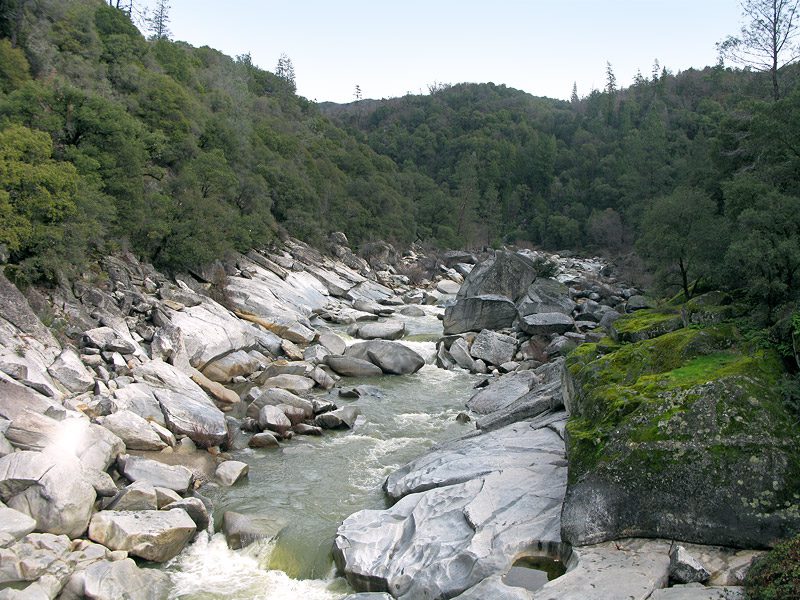Monday February 13, 2012

From a river’s headwaters to its confluence, physical variables impact the fish assemblages that may be present. Fish biologists and aquatic ecologists often identify these physical variables by classifying river segments, such as the bedrock canyon (photo above), into Channel Habitat Types (CHT). Geomorphological characteristics like gradient, channel confinement, stream size, and substrate define the channel habitat types. By assessing CHT fish biologists may determine quality and quantity of available habitat for a species of interest. For example salmonids are usually associated with higher gradient streams than warm water fish species in North America. Also, rainbow trout and steelhead are associated with relatively steeper, swifter habitats than juvenile Chinook salmon (Montgomery et al. 1999). Similar channel types are expected to respond to natural or human-caused changes in a similar manner, so by understanding these responses we can best preserve and restore habitat for desired species.
